ふと見上げれば、街の片隅や森の奥深くに、静かに佇む鳥居。私たちは、初詣や七五三、あるいは人生の節目節目で、ごく自然に神社を訪れ、手を合わせます。しかし、その神社の始まりが、今あるような「社殿」ではなかったことをご存知でしょうか?そして、私たちのよく知るお寺、つまり仏教と深く関わり、時には対立してきた激動の歴史があったことを。
日本の風景に溶け込む神社の存在。それは、自然を敬い、神々と共に生きてきた日本人の精神史そのものです。この記事では、古代の素朴な信仰から、国家の礎となるまでの壮大な物語を紐解いていきます。
- 始まりは「建物」ではなかった?森や岩に神を見出した古代日本の信仰
- ライバルか、パートナーか?仏教との出会いがもたらした「神仏習合」という大改革
- 「神社」と「寺」が完全に分かれたのは明治時代?国家が導いた大変革
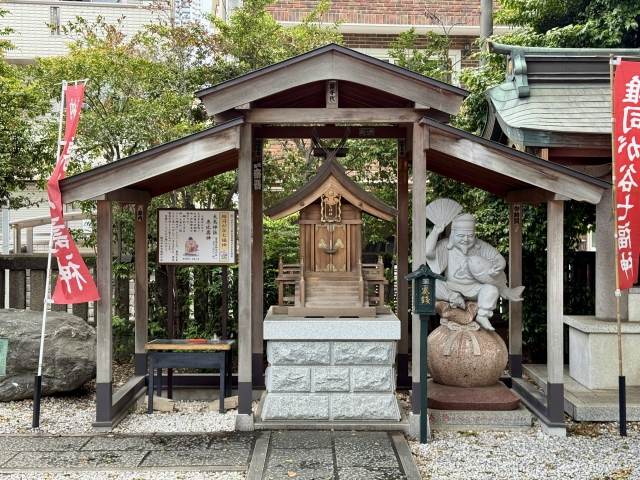
自然への畏敬 神社の原点
現代の私たちが「神社」と聞いて思い浮かべるのは、本殿や拝殿といった立派な建物でしょう。しかし、その歴史の幕開けは、まったく異なる風景から始まりました。古代の日本では、特定の場所に社殿を建てるのではなく、雄大な自然そのものに神が宿ると信じられていました。
例えば、巨石や山、森、滝といった、人々の心を揺さぶる圧倒的な自然物。これらは「磐座(いわくら)」や「神籬(ひもろぎ)」と呼ばれ、神々が降臨する神聖な場所、あるいは神そのものとして崇拝の対象でした。人々はこれらの場所で祭祀を行い、自然の恵みに感謝し、時にはその猛威を鎮めるために祈りを捧げたのです。
奈良県にある大神神社(おおみわじんじゃ)は、今でも本殿を持たず、背後にそびえる三輪山そのものをご神体としています。これは、社殿が生まれる以前の、古代の信仰の形を現代に伝える貴重な姿と言えるでしょう。この自然への畏敬の念こそが、神社の揺るぎない原点なのです。
神と仏の融合 習合という知恵
飛鳥時代、日本に仏教が伝来します。これは、日本の信仰のあり方を根底から揺るがす大きな出来事でした。異国の神である「仏」と、古来の日本の「神」。両者は対立するのではなく、驚くべき形で融合していくことになります。これが「神仏習合」です。
人々は、日本の神々も仏が人々を救うために仮の姿で現れたもの(権現)と捉えたり、神社の境内にお寺(神宮寺)が建てられたりするようになりました。神社の神前で読経が行われることも珍しくありませんでした。
例えば、武士の守護神として知られる八幡神は、仏教の菩薩号をつけて「八幡大菩薩」と呼ばれました。このように、神と仏は役割を分担しながら、あるいは一体化しながら、人々の信仰の中に共存していったのです。この柔軟で寛容な精神は、約1000年にもわたって日本の文化の基層を形成し、独特の宗教観を育んでいきました。
「神仏習合は、外来の文化である仏教と、日本古来の神祇信仰とが接触し、長い時間をかけて融合し、新たな信仰のかたちとして日本に定着したものです。」(武蔵野大学 名誉教授 田久保誓一 – 出典:武蔵野大学「神仏習合とは」)
この時代に形成された建築様式や祭礼、神々の姿は、今もなお多くの神社仏閣にその名残をとどめています。
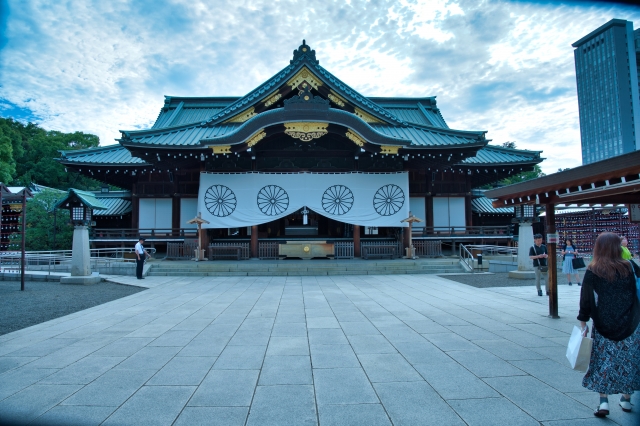
国家と神道 明治の大変革
江戸時代まで続いた神と仏の共存関係は、明治維新によって劇的な転換点を迎えます。新政府は、天皇を中心とした近代国家を形成するため、古来の神道を国家の精神的支柱と位置づけました。そして、その純粋性を保つために、仏教的な要素を徹底的に排除する「神仏分離令」を発令したのです。
この政策は、時に「廃仏毀釈(はいぶつきしゃく)」と呼ばれる民衆運動へと発展し、全国各地で多くの寺院や仏像、経典が破壊されるという悲劇を生みました。神社からは仏教的な装飾が取り払われ、僧侶は神職から追放されました。これまで「八幡大菩薩」と呼ばれていた神は「八幡神」となり、神宮寺は廃止されました。
この大変革により、現代の私たちが認識しているような「神社」と「お寺」の明確な区別が生まれたのです。神社は国家の祭祀を司る特別な場所とされ、第二次世界大戦の終結まで、この「国家神道」体制が続くことになります。
現代への継承 そして未来へ
第二次世界大戦後、国家と神道は分離され、神社は国家管理を離れて一宗教法人となりました。かつての国家的な役割から解き放たれた神社は、今、私たちの生活の中で多様な役割を担っています。
地域コミュニティの中心として人々を繋ぐお祭り、個人の幸せを願う初詣や七五三、あるいは日々の喧騒を離れて心を落ち着かせる静寂の空間として。その姿は時代と共に変化しながらも、自然を敬い、見えざるものとの繋がりを大切にしてきた日本人の精神性の拠り所として、確かに存在し続けています。
神社の歴史を知ることは、単なる過去の知識を得るだけではありません。それは、鳥居をくぐる一歩を、より深く、意味のあるものに変えてくれる、日本人の心のルーツを辿る旅なのです。
解説ポイント①:始まりは「建物」ではなかった?森や岩に神を見出した古代日本の信仰
神社の最も古い形態は、自然物そのものを崇拝の対象とするアニミズム(精霊信仰)に根差しています。古代の人々は、生命や神秘的な力を感じる山、岩、木、滝などに「カミ」の存在を感じ取り、それらを神聖な領域としていました。ご神体とされる岩を「磐座(いわくら)」、神域を示すために木々を囲ったものを「神籬(ひもろぎ)」と呼び、これらは祭祀の場となりました。社殿という恒久的な建物を建てるという考え方は、当初はありませんでした。この信仰の形は、後に稲作文化が広まる中で、収穫などを祈るための祭祀施設として、徐々に社殿が建てられるようになった後も、神社の本質として受け継がれています。例えば、多くの神社に存在する「鎮守の森」は、この古代の信仰の名残と考えることができるでしょう。
解説ポイント②:ライバルか、パートナーか?仏教との出会いがもたらした「神仏習合」という大改革
6世紀に日本に伝来した仏教は、当初、古来の神祇信仰と対立する側面もありました。しかし、やがて両者は互いに影響を与え合い、「神仏習合」という日本独自の信仰形態を生み出します。これは、日本の神々を仏教の守護神と位置づけたり(護法善神)、神々は仏が人々を救うために日本の地で仮の姿(権現)として現れたのだ、と説明する「本地垂迹説(ほんじすいじゃくせつ)」によって理論的に体系化されました。これにより、神社の境内に寺が建てられ、神前で読経が行われるなど、神と仏が一体の信仰対象となることが一般化しました。この習合は、建築、美術、文学、祭りなど、日本の文化全般に深い影響を与え、約1000年にわたり日本の宗教観の根幹を成しました。
解説ポイント③:「神社」と「寺」が完全に分かれたのは明治時代?国家が導いた大変革
約1000年間続いた神仏習合の時代は、1868年(明治元年)の「神仏分離令」によって終焉を迎えます。明治新政府は、天皇を神聖な君主とする中央集権国家を樹立する上で、日本の固有信仰である神道を国家統合の理念的支柱としました。その一環として、神道から仏教的要素を分離・排除することが目指されたのです。この法令自体は神道と仏教の領域を明確に分けることを意図したものでしたが、民衆レベルでは過激な「廃仏毀釈」運動を引き起こし、多くの貴重な仏像や寺院が破壊される結果を招きました。この政策により、神社の祭神から仏教的な尊格(菩薩号など)が外され、神社に仕えていた僧侶は還俗を強制されるなど、今日の私たちが知るような「神社」と「寺」の明確な区別が、この時に人工的に作り出されたのです。
参考文献
- 武蔵野大学「神仏習合とは」 – https://www.musashino-u.ac.jp/albums/abm.php?f=abm00041499.pdf&n=神仏習合神道.pdf
- 國學院大學「神道と日本文化のあり方」 – https://www.kokugakuin.ac.jp/event/detail/333303
- NHK 高校講座 | 日本史「神仏分離と廃仏毀釈」 – https://www.nhk.or.jp/kokokoza/tv/nihonshi/archive/resume028.html
【English Article】
A 1,500-Year Journey: Why Are the Japanese Drawn to Shrines? An Unknown History
Whether in a quiet city corner or deep within a forest, the sight of a Torii gate is a familiar one in Japan. People visit Shinto shrines naturally for New Year’s blessings, to celebrate milestones like Shichi-Go-San, or at various turning points in their lives. But did you know that the earliest shrines were not the grand buildings we see today? And that they have a dynamic history of deep connection, and sometimes conflict, with Buddhist temples?
The presence of shrines, so seamlessly woven into the Japanese landscape, is the very story of the Japanese spiritual history—a history of revering nature and living alongside the gods, or kami. This article unravels the grand narrative, from ancient, simple beliefs to the spiritual foundation of a nation.
- The Beginning Had No Buildings? Ancient Japanese Faith That Found Gods in Forests and Rocks
- Rivals or Partners? The Great Reformation of “Shinbutsu-Shugo” Brought by the Encounter with Buddhism
- Shrines and Temples Were Only Separated in the Meiji Era? A Major Transformation Led by the State
Reverence for Nature: The Origin of Shrines
When we think of a “shrine” today, we likely picture impressive structures like a honden (main hall) and haiden (worship hall). However, the dawn of its history began with a completely different scene. In ancient Japan, it was believed that gods resided not in purpose-built shrines, but in majestic nature itself.
Natural wonders that stirred the human heart—such as giant rocks, mountains, forests, and waterfalls—were called iwakura or himorogi. They were revered as sacred places where the gods descended, or as the very embodiment of the gods. People performed rituals in these locations, giving thanks for nature’s bounty and praying to appease its occasional fury.
Omiwa Shrine in Nara Prefecture, for instance, still has no main hall, worshiping Mount Miwa, which rises behind it, as its sacred body. This is a precious example of the ancient form of faith, predating the construction of shrine buildings. This reverence for nature is the unwavering origin of Shinto shrines.
The Fusion of Gods and Buddhas: The Wisdom of Syncretism
In the Asuka period, Buddhism was introduced to Japan, a major event that fundamentally shook the country’s existing beliefs. The foreign “Buddha” and the native Japanese “kami” did not clash but instead merged in a remarkable way. This is known as “Shinbutsu-Shugo” (the syncretism of Shinto and Buddhism).
People came to believe that the Japanese kami were temporary manifestations (gongen) of Buddhas, appearing to save humanity. It became common for temples (jingu-ji) to be built within shrine grounds, and it was not unusual for Buddhist sutras to be chanted before the kami.
For example, Hachiman, known as the guardian deity of warriors, was given the Buddhist title of Bodhisattva and called “Hachiman Daibosatsu.” In this way, gods and Buddhas coexisted within people’s faith, sometimes sharing roles and sometimes becoming one. This flexible and tolerant spirit shaped the foundation of Japanese culture for about a thousand years, nurturing a unique religious perspective.
“Shinbutsu-shugo is a form of faith that became established in Japan after a long period of fusion, resulting from the contact between the foreign culture of Buddhism and Japan’s native Shinto beliefs.” (Professor Emeritus Seiichi Takubo, Musashino University – Source:Musashino University, “What is Shinbutsu-Shugo?”)
The architectural styles, festivals, and deities formed during this era can still be seen in many shrines and temples today.
The State and Shinto: The Great Meiji Transformation
The coexistence of gods and Buddhas, which had lasted until the Edo period, faced a dramatic turning point with the Meiji Restoration. The new government positioned the ancient Shinto faith as the spiritual pillar of a modern state centered on the Emperor. To preserve its purity, it issued the “Shinbutsu Bunri Rei” (Shinto and Buddhism Separation Order), aiming to thoroughly eliminate Buddhist elements.
This policy sometimes escalated into a popular movement called “haibutsu kishaku” (abolish Buddhism and destroy Shakamuni), leading to the tragic destruction of numerous temples, Buddhist statues, and scriptures across the country. Buddhist decorations were removed from shrines, and monks were expelled from their positions as Shinto priests. The deity once called “Hachiman Daibosatsu” became “Hachiman-shin,” and the jingu-ji temples within shrines were abolished.
This great transformation created the clear distinction between “shrines” and “temples” that we recognize today. Shrines were designated as special places for state rituals, and this “State Shinto” system continued until the end of World War II.
Succession to the Present and into the Future
After World War II, Shinto was separated from the state, and shrines became independent religious corporations, no longer under government control. Freed from their former national role, shrines now play diverse roles in our lives.
They serve as the heart of local communities, connecting people through festivals; as places to pray for personal happiness during New Year’s visits or for Shichi-Go-San; and as serene spaces to find peace away from the hustle and bustle of daily life. While their form has changed with the times, they continue to exist as a spiritual anchor for the Japanese people, who have long cherished a connection with the unseen and revered nature.
Knowing the history of shrines is more than just acquiring knowledge of the past. It is a journey to the roots of the Japanese spirit, one that makes each step through a Torii gate a more profound and meaningful experience.
Analysis Point ①: The Beginning Had No Buildings? Ancient Japanese Faith That Found Gods in Forests and Rocks
The oldest form of Shinto is rooted in animism, the worship of nature itself. Ancient people felt the presence of “kami” in mountains, rocks, trees, and waterfalls that exuded life and a mystical power, and they designated these as sacred domains. Rocks considered to be the body of a god were called iwakura, and areas where trees were encircled to mark a sacred territory were known as himorogi. These became sites for rituals. The idea of constructing a permanent building, a shrine pavilion, did not exist initially. This form of faith was passed down as the essence of shrines even after shrine buildings were gradually constructed as facilities for rituals, such as praying for harvests, with the spread of rice cultivation. The “Chinju no Mori” (sacred forest grove) found in many shrines can be seen as a remnant of this ancient belief.
Analysis Point ②: Rivals or Partners? The Great Reformation of “Shinbutsu-Shugo” Brought by the Encounter with Buddhism
Buddhism, introduced to Japan in the 6th century, initially had aspects that conflicted with the ancient Shinto faith. However, the two eventually influenced each other, giving rise to a unique form of belief in Japan called “Shinbutsu-Shugo.” This was theoretically systemized by the “Honji Suijaku” theory, which positioned Japanese kami as guardian deities of Buddhism or explained that kami were temporary manifestations (gongen) of Buddhas appearing in Japan to save humanity. This led to the general practice of building temples within shrine precincts and chanting Buddhist sutras before the kami, making gods and Buddhas integrated objects of worship. This syncretism profoundly influenced all aspects of Japanese culture, including architecture, art, literature, and festivals, and formed the basis of the Japanese religious view for about 1,000 years.
Analysis Point ③: Shrines and Temples Were Only Separated in the Meiji Era? A Major Transformation Led by the State
The era of Shinbutsu-Shugo, which lasted for about a millennium, came to an end with the “Shinto and Buddhism Separation Order” in 1868 (the first year of the Meiji era). The new Meiji government made Shinto, Japan’s indigenous faith, the ideological pillar for unifying the nation in order to establish a centralized state with the Emperor as a sacred monarch. As part of this, it aimed to separate and eliminate Buddhist elements from Shinto. While the ordinance itself was intended to clearly divide the domains of Shinto and Buddhism, it triggered the radical “haibutsu kishaku” (abolish Buddhism) movement among the populace, resulting in the destruction of many valuable Buddhist statues and temples. This policy led to the removal of Buddhist titles (like Bodhisattva) from shrine deities and forced monks serving at shrines to return to secular life. The clear distinction between “shrines” and “temples” as we know it today was artificially created at this time.
References
- Musashino University, “What is Shinbutsu-Shugo?” – https://www.musashino-u.ac.jp/albums/abm.php?f=abm00041499.pdf&n=神仏習合神道.pdf
- Kokugakuin University, “The Nature of Shinto and Japanese Culture” – https://www.kokugakuin.ac.jp/event/detail/333303
- NHK High School Course | Japanese History, “Separation of Shinto and Buddhism and Haibutsu Kishaku” – https://www.nhk.or.jp/kokokoza/tv/nihonshi/archive/resume028.html

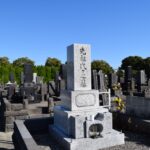
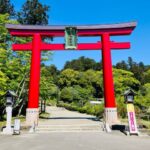



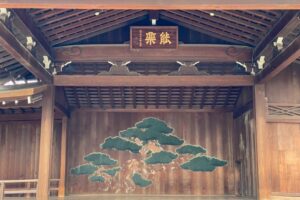
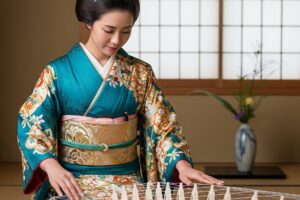

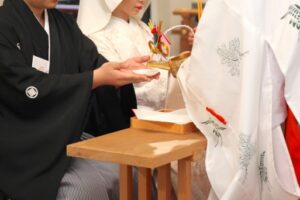

コメントを残す